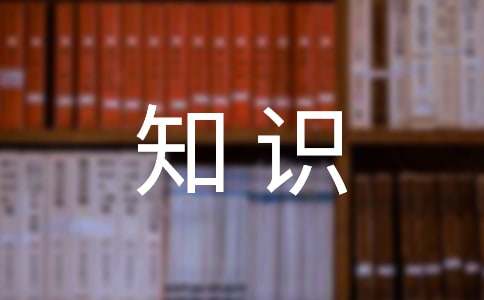小學英語學科必備的知識點
英語已經進入小學的課堂,并且成為一科很重要的課程。學好英語成為了很多小學生首要任務。下面是百分網小編為大家整理的小學英語必備的知識點歸納,希望對大家有用!

小學英語知識歸納
英語句子按語法結構的分類
1.簡單句(simple sentence)
簡單句只有一個主語(或并列主語)和一個謂語動詞(或并列謂語動詞)。例如:
The whole village came out to welcome him home.
The temperature and pressure are controlled and adjusted with these switches.
2.并列句(compound sentence )
并列句是由等立連詞或分號把兩個或兩個以上的簡單句連在一起。例如:
An urgent telegram was sent to her husband and she was waiting for a reply.
You can’t count on him to help; he is such a busy man.
3. 復合句(complex sentence)
復合句,即主從復合句,是有關聯(lián)詞連接主句和從句構成的。例如:
Whether we go or not has not been decided.
It shocked me that Peter did not tell anybody where he was. I don’t doubt that he can do a good job of it.
小學英語知識總結
一、一般現(xiàn)在時主要用于:
1 、表示經常性或習慣性動作。
e.g. It seldom snows here.
2 、表示現(xiàn)在的特征或狀態(tài)。
e.g. He is always ready to help others.
3 、普遍真理。
e.g. Action speaks louder than words.
4 、劇情圖片介紹,背景說明,動作解說。
e.g. (Tom enters the room_and_sits at the table)
Doctor : What`s your trouble, young man?
Tom : I`ve caught a cold, doctor.
5 、時間、條件、讓步、方式狀語從句表將要發(fā)生的動作時。
e.g. Tomorrow we shall go for an outing unless it rains.
與這種時態(tài)連用的時間狀語常有:
always, often, never, seldom, usually, once, a week, now 等。
二、一般過去時主要用于:
1 、表示過去某個時間發(fā)生的動作或情況(包括習慣性的動作或狀態(tài)) e.g. When did you read the novel?
She often came to help us in those days.
2 、談到過去的.情況時
e.g. I didn`t know you were so busy.
3 、談到已死人的情況時
e.g. Lei Feng was a great communist fighter.
與這個時態(tài)連用的時間狀語常有:
yesterday, last night, the other day, two months ago, in 1985, then, just now,
when, after, as soon as 引導的時間狀語從句,表示主句動作開始的時間。
小學英語知識點
一、定冠詞不與表示一類人或事物的復數(shù)名詞連用。例如:
1. I like reading the books.(×) I like reading books.(√)
2. She likes the cats.(×) She likes cats.(√)
二、定冠詞不能用在某些習慣用語中的名詞前面。例如:
1. I have lunch at the noon.(×) I have lunch at noon.(√)
2. We go to school by the bus.(×) We go to school by bus.(√)
三、定冠詞不能用在某些專用名詞和不可數(shù)名詞前面。例如:
1. I like the China.(×) I like China.(√)
2. Would you like a cup of the water? (×)
Would you like a cup of water?(√)
四、定冠詞不能用在節(jié)日、日期、月份、季節(jié)前面。例如:
1. Today is the Teachers' Day. (×)
Today is Teachers' Day.(√)
2. He was born in the May in 1987. (×)
He was born in May in 1987. (√)
五、定冠詞不能用在表示稱呼語或某些頭銜的名詞前面(尤其作表語、賓補時)。例如:
1. Good morning, the sir!(×)Good morning, sir! (√)
2. I need some help, the Mummy.(×)
【小學英語學科的知識點】相關文章:
高中英語學科必備的知識點11-20
小學英語學科期末評語07-29
小學英語學科教學建議06-17
小學英語知識點試題10-01
小學英語學科基礎知識歸納10-31
小學英語學科教學計劃09-15
小學英語學科教學總結范文07-15
小學英語學科實驗教學總結11-01
小學英語學科教學計劃04-02